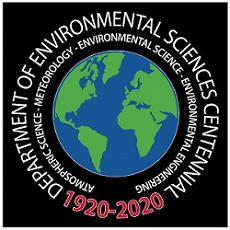DATE/TIME: Friday, April 11, 2025, 2:30 pm PLACE: ENR building, room 223
Graham Taylor
NOAA GFDL
Atmospheric Circulation, Climate Change, and Related Impacts Over the Western United States
Uncertainty concerning future changes to atmospheric circulation patterns, and their impacts, is one of the current challenges at the forefront of climate science. This work conducts a regional study of the western United States, analyzing climate model projections of synoptic-scale circulation patterns, their frequency, and associated temperature and precipitation anomalies under a high-end global warming scenario. Additionally, future projections of changes in the timing of autumn rain and wind onset in a suite of downscaled climate models are assessed.
Analysis of future projections of climate models reveals that under a high-end global warming scenario, the range of future circulation patterns over the Pacific Northwest generally resembles the past. However, the strength of Z500 anomalies is found to weaken, although significant results are generally confined to summer. High amplitude patterns are found to decrease in frequency, and patterns in all seasons except summer show increased precipitation.
The circulation regime shift from summer to winter in the western United States brings the onset of Pacific storm systems. As a consequence, a distinct fall/winter rainy season and windy season appears over the region, and generally marks the end of active wildfires. However, the increase in amplified circulation patterns also means strong winds, which can exacerbate wildfires, become increasingly likely as the season progresses. Using high-resolution simulations, this rainy and windy season onset is characterized over the western United States, and future projections are analyzed. Results find that by the end of the 21st century, the beginning of the rainy season may be drier in some regions, and the wind may shift later.
Seminar Host:
Ben Lintner
Department of Environmental Sciences, SEBS, Rutgers University



